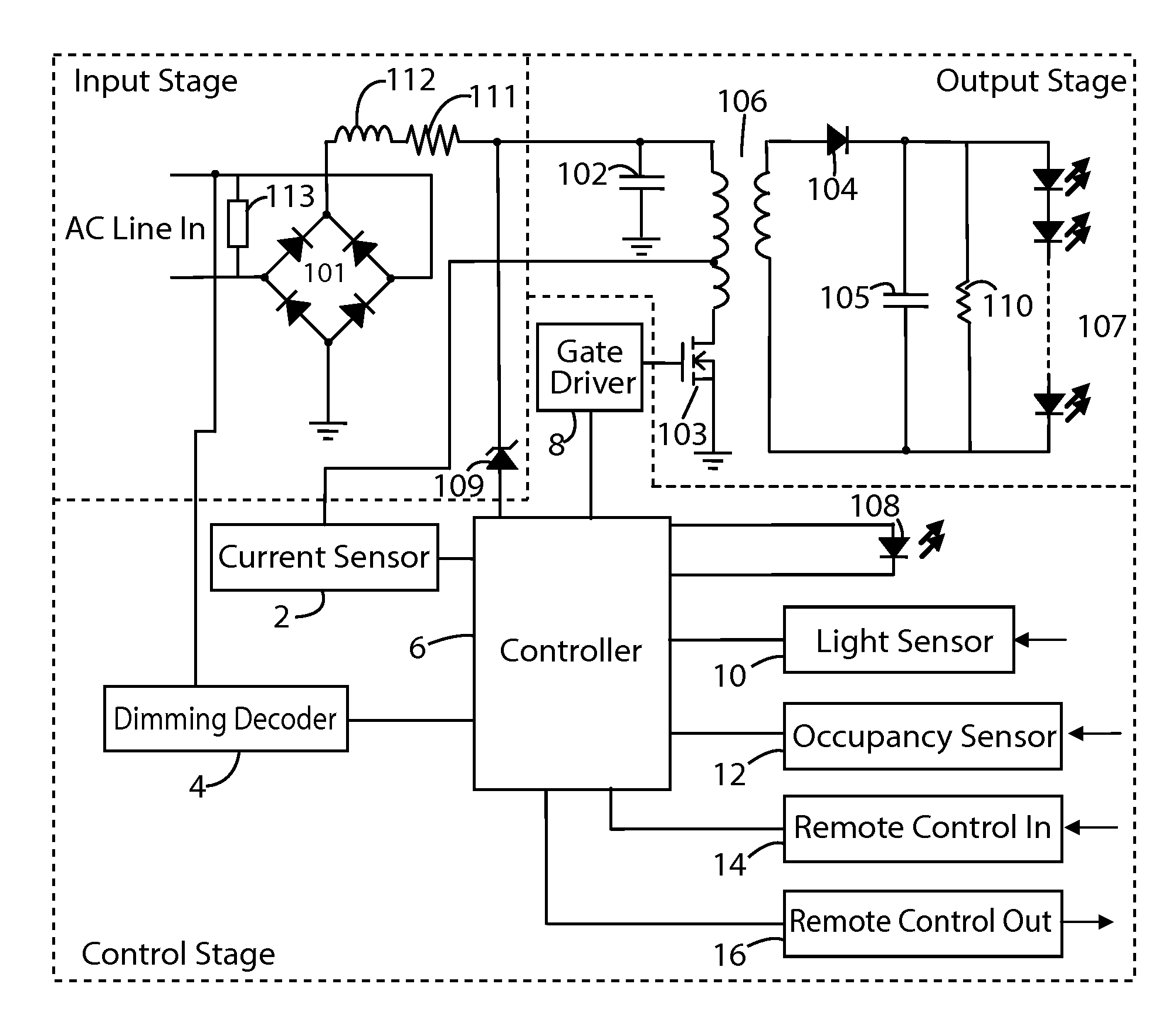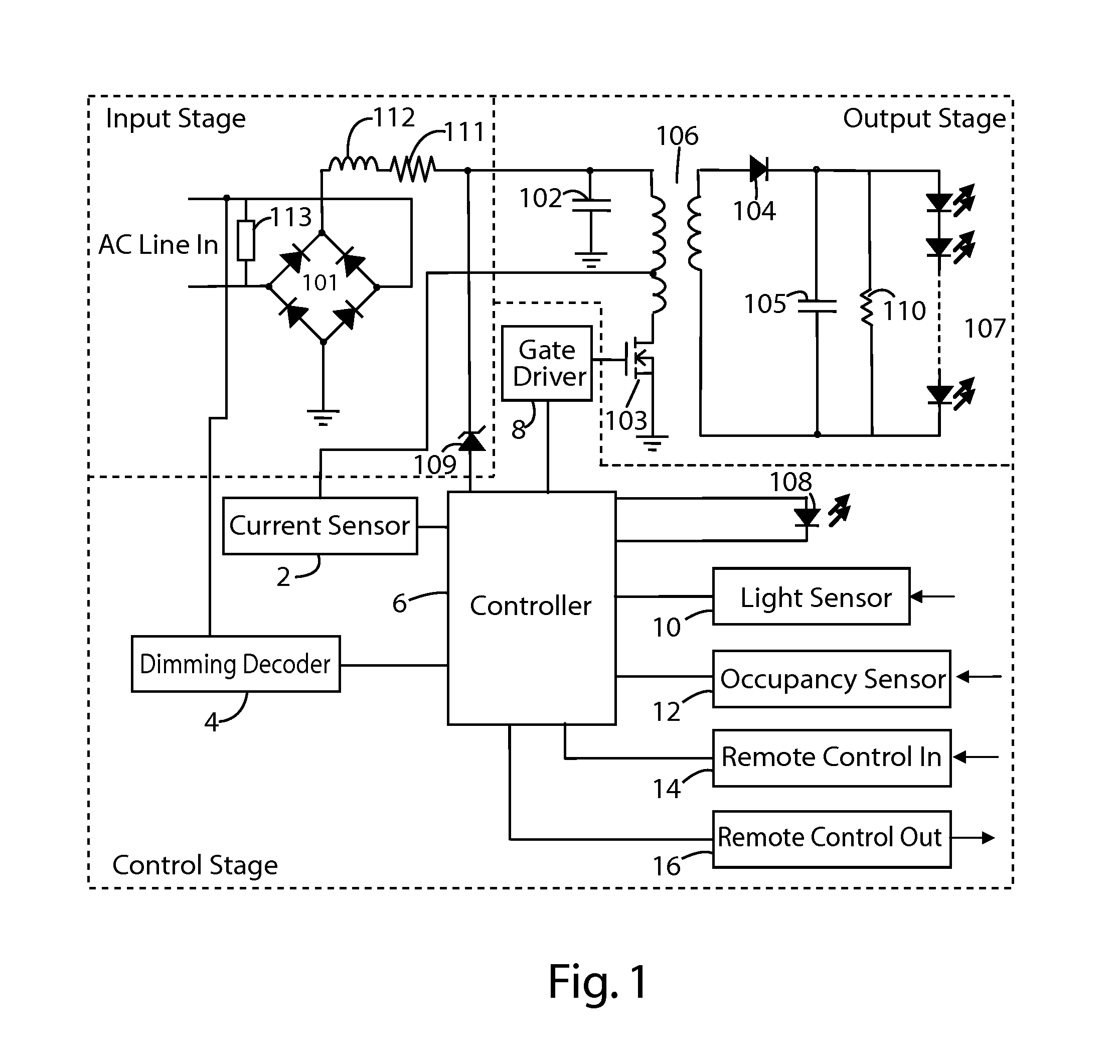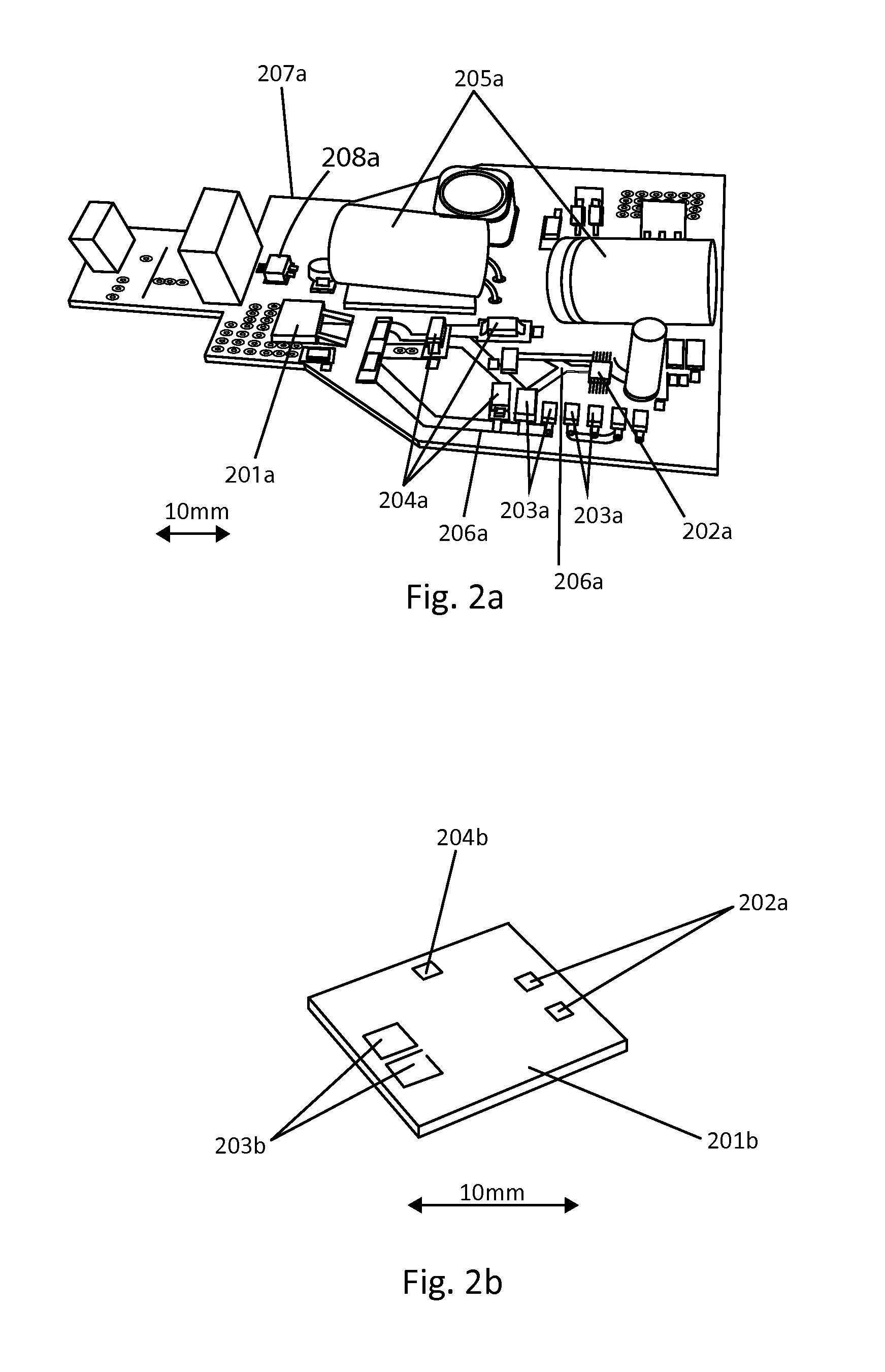Integrated Electronic Device for Controlling Light Emitting Diodes
a light-emitting diode and integrated electronic technology, applied in the direction of printed circuit non-printed electric components association, lighting and heating apparatus, instruments, etc., can solve the problems of increasing design complexity, increasing cost, and affecting the reliability of current thermal cycling reliability standards for retrofitting led lights. , to achieve the effect of reducing cost, reducing complexity and reducing complexity
- Summary
- Abstract
- Description
- Claims
- Application Information
AI Technical Summary
Benefits of technology
Problems solved by technology
Method used
Image
Examples
embodiment 1
[0035
[0036]FIG. 3 shows the first embodiment of an integrated LED Driver. With reference to FIG. 3, the rectification bridge 301, controller IC 302, and power transistor 304 are placed in between two organic PCBs (top and bottom substrates) 310 joined by an adhesive 311. Element 304 can also be a power resistor or transient voltage protector. The organic substrate can be, for example, a FR16 organic substrate, or another such substrate known to one skilled in the art. Components 301, 302, and 304 are “packageless”, which means that only the active silicon substrate and the interconnects are present, whereas an external packaging, such as plastic, ceramic, or solder bump, are not present. Electrical connection of components 301, 302, and 304 can be achieved, for instance: i) through via opening 308, 307 in the PCB substrate 310; ii) attaching components 301, 302, and 304 to PCB 310 through via openings 308; iii) filling via openings 308, 307 with a metal and forming metal traces 306 ...
embodiment 2
[0038
[0039]With reference to FIG. 3, devices 303 and 305 are assembled by soldering on top of the PCB 310 because of the size limitations—it is generally problematic to accommodate devices with thicknesses of greater that 0.5 mm inside a PCB stack. This problem can be resolved by using a so called integrated passive device (IPD) components and integrated active device (IAD) components. IPDs' usually have thin film substrates like silicon, alumina or glass. IPD components can be inductors, transformers, capacitors, resistors, fuses—devices required for constructing a LED driver. IAD components are similar to IPDs' except that they are active components such as a rectifier and transistor. IPD and IAD components have several important distinctions compared to conventional SMT devices, including: i) planarity on a thin rigid substrate; ii) integration of two or more components on a single die (chip); and iii) no external package. For example, a single chip may contain several capacitors...
embodiment 3
[0043
[0044]Embodiment 2 achieves cost and reliability improvement by eliminating solder joints and using packageless components. Further improvement can be achieved by replacing an organic PCB material that results in significant drawbacks on the entire implementation. For certain implementations, PCB is a relatively poor choice of a support substrate for components and interconnects, because it has low thermal conductivity and a thermal expansion coefficient which is ten-fold greater than that of silicon. A semiconductor such as silicon is the most common material for active devices and IPDs', and is also a practical choice for LED driver applications that must withstand 10,000 thermal cycles.
[0045]Embodiment 3 shown in FIG. 5 takes an LED driver implementation to the next level of improvement in reliability, performance, and cost. The advantages are achieved through: i) thermal matching close to an ideal by using an Si substrate to support active and IPD / IAD components and interco...
PUM
 Login to View More
Login to View More Abstract
Description
Claims
Application Information
 Login to View More
Login to View More - R&D
- Intellectual Property
- Life Sciences
- Materials
- Tech Scout
- Unparalleled Data Quality
- Higher Quality Content
- 60% Fewer Hallucinations
Browse by: Latest US Patents, China's latest patents, Technical Efficacy Thesaurus, Application Domain, Technology Topic, Popular Technical Reports.
© 2025 PatSnap. All rights reserved.Legal|Privacy policy|Modern Slavery Act Transparency Statement|Sitemap|About US| Contact US: help@patsnap.com



